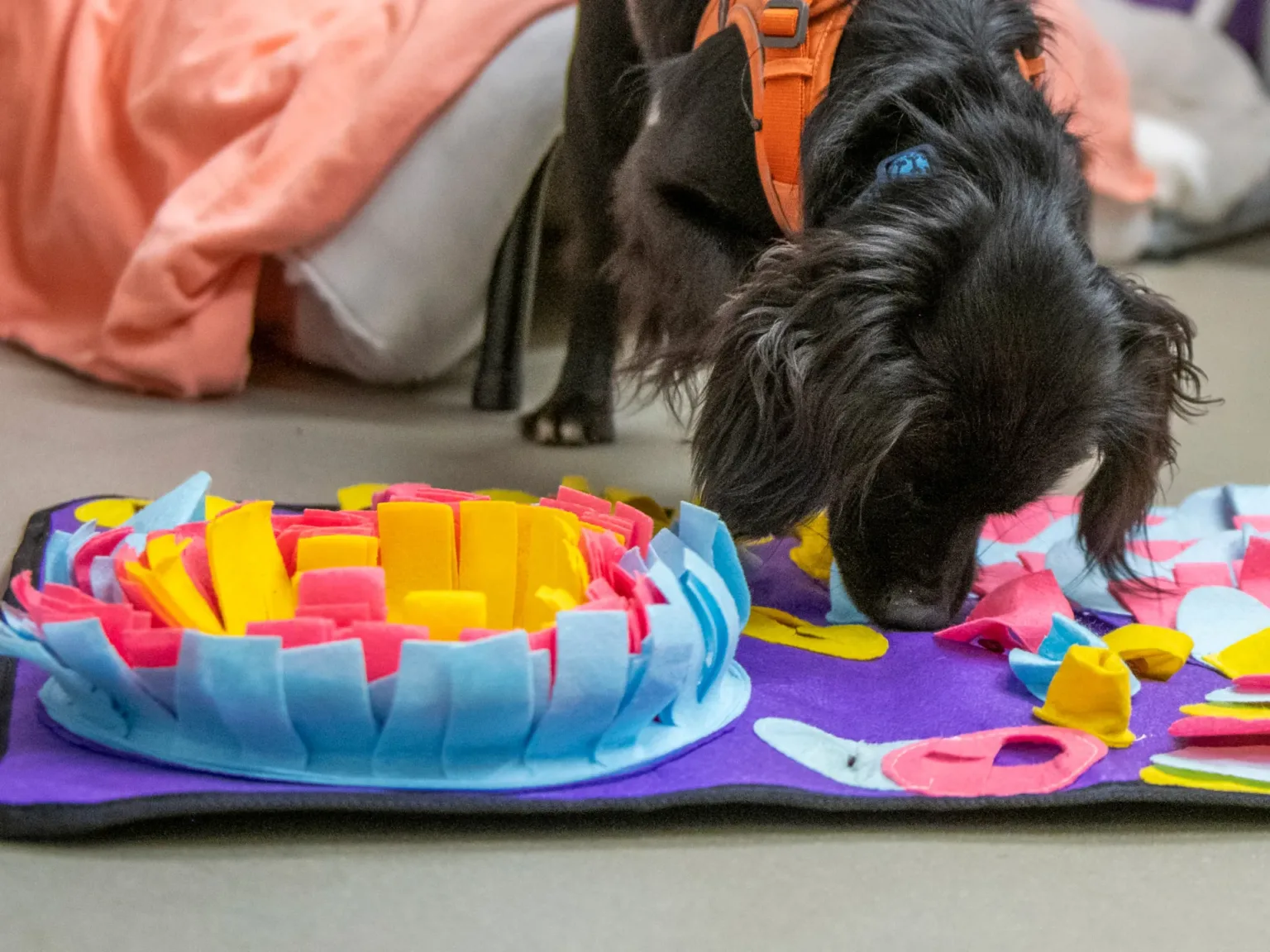Could you star in The Dog House?
If you're looking for a match, filming for the next series starts this Spring.

Not only is it a great way to stimulate your four-legged friend, but it can also calm them down if they’re the lively type!
ACE (Animal Centred Education) Free Work, developed by the founder of ACE, Sarah Fisher, is dog-led and offers amazing benefits for your canine companion. It allows dogs to take part at their own pace and engage in activities they enjoy the most – a double win! As well as being good for growing your dog’s confidence, you’ll learn lots about them, and it may even strengthen your bond.
Whilst this type of activity can help any dog, it’s particularly good for nervous canines who may not be comfortable going on walks. And it’s great for rainy days, too!
It’s also a brilliant way to help your dog de-stress after a scary or stressful experience. For example, suffering an injury and undergoing an operation, or being exposed to loud noises like fireworks.
Free Work involves creating an easy ‘obstacle course’ for your dog. The good news is that it isn’t expensive or complicated. A starter set-up could include:
Lay out all your bits and pieces and then add the food on top of and around the obstacles. You can use your dog’s normal kibble for this, but it’s also fun to throw in some different textures and tastes. Make it extra interesting by smearing food such as squeezy cheese, pate or squashy fruit, on hard surfaces (make sure they’re clean) and using snuffle mats. And be sure to sprinkle some bits around the various items, just in case your dog isn’t sure about them at first and needs a persuasive nudge!
Free Work enables you to see how your dog moves and spot any issues. So, if you can, it’s good to remove their collar and/or harness so they do this activity ‘naked’ – but make sure you’re in a secure area. When watching their movement, look for any stiffness, reluctance to turn a specific way or any abnormalities in their gait (how they move). It can be a good idea to video record the session so you can watch back and slow down the footage.
As this activity is dog-led, it’s important to give your dog complete freedom to navigate the area on their own, without intervention or encouragement from you. This is how they learn and build their confidence. If your dog seems hesitant or unsure, you can wander through with them initially, but allow them to approach things at their own pace.
Start with familiar items, then as your dog gets used to the activity you can introduce other items that you know would usually unsettle them. Examples might include a muzzle, pushchair, the clothing of a stranger or a noisy activity such as a rummage box.
Watching your dog navigate the course will tell you a lot about them. As well as observing their general movement and agility, you’ll learn about their likes and dislikes. For example, do they enjoy the lik mat with yogurt on? Do they spend more time walking on certain surfaces more than others? What toys do they engage with the most? This will allow you to come up with some Free Work ideas they’ll really love.
It’s best to let your dog crack on with this activity as independently as possible, but make sure you supervise the entire time, and step in if necessary. Over time, your dog should learn to love it and reap the benefits!